This build has been archived by the author. They are no longer supporting nor updating this build and it may have become outdated. As such, voting and commenting have been disabled and it no longer appears in regular search results.
We recommend you take a look at this author's other builds.
This guide has not yet been updated for the current season. Please keep this in mind while reading. You can see the most recently updated guides on the browse guides page
 Thank You!
Thank You!
Your votes and comments encourage our guide authors to continue
creating helpful guides for the League of Legends community.
Runes: Conqueror


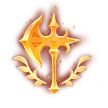
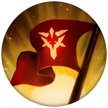



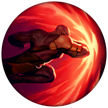


+10% Attack Speed
+9 Adaptive (5.4 AD or 9 AP)
+6 Armor
Spells:


Flash

Smite
Items
Ability Order


Z-Drive Resonance (PASSIVE)
Ekko Passive Ability
Threats & Synergies
 Threats
Threats
 Synergies
Synergies
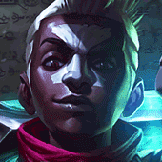 Show All
Show All
 Extreme Threats
Extreme Threats

 Ideal Synergies
Ideal Synergies

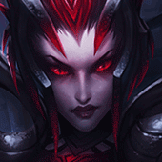
Elise
Watch for invades. Countergank. Dodge her E.

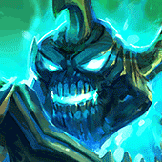
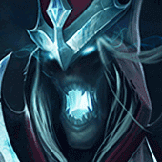
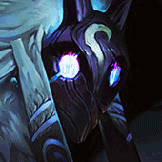
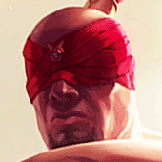
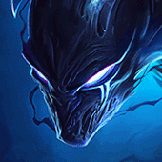
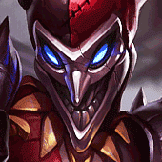
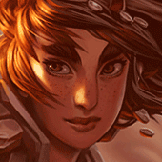
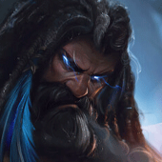
 Synergies
Synergies

| |||
| |||
|
IGN: TheInkKingLoL
Region: NA Rank: Silver III |

| |||||||||||||||||||||||||
| |||||||||||||||||||||||||

| |||||||||
|

| ||||||||||||||||
|
| ||||||||||||||||
|
PRIMARY RUNES
| ||||||||||||||||
|
SECONDARY RUNES
| ||||||||||||||||
|
| ||||||||||||||||
|
PRIMARY RUNES
| ||||||||||||||||
|
SECONDARY RUNES
| ||||||||||||||||
|
| ||||||||||||||||
|
PRIMARY RUNES
| ||||||||||||||||
|
SECONDARY RUNES
|

| |||||||||||||||||||||||||||||||||||||||||||||
|

| |
| |
| Above is a personally created combo guide video. It contains Ekko's main combos within it. While it may be poorly edited, low quality, etc (I'm not a YouTuber) I hope it will help you with combos! |

| |||||||||||||||||||||||
|
Conqueror Build
| |||||||||||||||||||||||
 Item Set Import Code Item Set Import Code | |||||||||||||||||||||||
| |||||||||||||||||||||||
| |||||||||||||||||||||||
| |||||||||||||||||||||||
| |||||||||||||||||||||||
| |||||||||||||||||||||||
|
Dark Harvest/Electrocute Build
| |||||||||||||||||||||||
 Item Set Import Code Item Set Import Code | |||||||||||||||||||||||
| |||||||||||||||||||||||
| |||||||||||||||||||||||
| |||||||||||||||||||||||
| |||||||||||||||||||||||
| |||||||||||||||||||||||
|

 |
Wolves, Raptors Spawn At: 1:30 Respawn Time: 2:00 Gromp, Krugs Spawn At: 1:42 Respawn Time: 2:00 Buffs (Blue Sentinel, Red Brambleback) Spawn At: 1:30 Respawn Time: 5:00 Rift Scuttlers (in river) Spawn At: 3:15 Respawn Time: 2:30 Rift Herald (in Baron Pit) Spawns At: 8:00 Respawn time: 6:00 Despawns at: 19:45 (19:55 if in combat) |
|
Elemental Drakes Spawns At: 5:00 Respawn Time: 5:00 |
Elder Dragon Spawns: 6:00 after a team gets 4 Drakes Respawn Time: 6:00 |
Baron Nashor Spawns At: 20:00 Respawn Time: 6:00 |

| Plants are stationary, neutral units with 1 health. They can be destroyed with a basic attack to trigger an effect. There are three different types of plants that will spawn in the jungle and river. Their spawn timers and locations vary slightly but for the most part they are fairly predictable. The first spawn locations for all plants are predetermined. | ||
 | ||
Blast Cones
Blast cones are red plants that, if you attack when a champion is within a radius of the unit, will launch the champion (yourself included if you are within the radius) in a predetermined direction. This can send units over terrain (so you can launch yourself or others over walls with it) and reveals enemy champions that get launched (this means that you can see them even in the fog of war temporarily). An indicator for landing point appears only for the player targeting the plant.
If the game is Infernal Rift (the map is changed because of an infernal soul), then additional blast cones will spawn in entrances to the jungle and in the alcoves. The locations are:
- Near each tri-brush near Gromp.
- By the Wolf Camp.
- In front of each base's gates.
- In the alcoves.
- The first inner cones initially spawn between 1:15 and 1:25.
- The first outer cones initially spawn between 5:00 and 5:30.
- The inner cones respawn between 5 minutes and 7 minutes after use.
- The outer cones respawn between 5.5 minutes and 6.5 minutes after use.
Honeyfruits
Honeyfruits are green plants that, when killed, drop 5 fruits that restore mana and health when walked over, while simultaneously slowing the champion. These are very helpful for restoring your health before or after fights (and sometimes during fights if truly necessary).
If the game is Ocean Rift (the map is changed because of an ocean soul), then additional honeyfruit will spawn in each jungle quadrant. The changes are:
- New honeyfruits first spawn 30 seconds after the rift transforms.
- The respawn times of the new honeyfruits from after the rift transforms is 2 minutes.
- First honeyfruits spawn between 6:00 and 6:30.
- The respawn times are between 5.5 and 7 minutes.
- Important Note: If a honeyfruit isn't taken before its respawn timer completes, a second honeyfruit may spawn. No more than two honeyfruits can exist per half of the river.
Scryer's Blooms
Scryer's Blooms are blue plants that, when hit, reveal enemy champions for 3 seconds and non-champion enemies for 12 seconds in a cone in the direction the attacker was facing. These plants are extremely useful for checking for and clearing vision in different parts of the jungle and river (specifically the pit) and to also check for objective contesting.
If the game is Cloud Rift (the map is changed because of a cloud soul), then additions scryer's blooms will spawn at the the entrances to the jungle. The locations are:
- In front of each base's gates.
- In front of each tri-brush in the river.
- First spawns are between 3:00 and 3:30, always at each quadrant's spawn point nearest to the side lanes.
- Next spawn time is at either spawn point, between 5 and 6.5 minutes after the plant is destroyed in that quadrant.
- Important note: Only one scryer's bloom can be present in each individual quadrant of the jungle.

Warding Safely
If you've played this game before and you've ever tried to place wards, you've probably ended up dying because of it at least once. That can easily occur since you naturally want to make the dark areas of the map light. However, while you (probably) had good intentions doing this, we want to avoid dying when warding. So how do you ward safely?
To avoid this trap, when you are looking to ward you need to go through a mental checklist to decide on safety and how deep you can push into the enemies side to ward.
| 1. How many, and which, enemies are missing? | |
| 2. Do my nearby laners have lane priority? | |
| 3. Where and when did I see the enemy jungler last? | |
| 4. Will allies be able to rotate to me if I get into trouble? |
If you have recently seen the enemy jungler on one side of the map, then that should be your cue to go in and ward in the enemy jungle. This is a very important condition unless you are extremely ahead because it will minimize the risk of getting killed simply to place a ward.
You should also look at mid priority. Does the enemy mid laner or your mid laner have priority? (This means that they are pushed up) If they do you should be careful or not go to place a ward at all. Other considerations are the champions that are being played. If the enemy laner is playing a champion that can rotate very easily (examples include
The main thing to consider when going to ward: Will I die if I run into the missing enemies? If you will then don't. If not, then you are clear to do as you wish. You may make mistakes sometimes, but we are only human, and so this is normal. The main thing to remember is to learn from these mistakes.
Level 1 Wards
These wards can be crucial to place in the early game. It gives you information about the enemy junglers pathing, as well as potential invade information. It isn't necessary to place this ward every game, but it can be extremely useful, and I recommend especially against powerful early game junglers like
If you place your ward from the time frame of 0:45-0:50 you can recall and buy

| Level 1 Wards: Pixel Brush | ||
| This is one of your options for an early ward. It helps gives you information about enemies invading early into the match as well can help alert your laners about level 2 ganks. However, while this is a good warding location, it does not give as much information as you could get out of a level 1 ward. It depends on the situation though, so if you are playing against a level 2 ganker or the enemies won't let you ward raptors you can place your ward here. | |||

| Level 1 Wards: Raptors | ||
| This is the best level 1 ward you could place. It gives you information on the enemy junglers early clear path. The best way to make use of this is to check which lane leashes their jungler (they will be late to lane) and then keep an eye on your ward if it is on the side where they started. If they started on that side but don't walk past the ward then they likely went to Krugs, which is still useful information for you. | |||
Trinket Management

| This trinket is your starting trinket and has a cooldown of 240 - 120s per charge (this decreases with levels). This trinket provides vision for a large area, but only provides vision of bushes it is in. | |

|
This trinket sweeps for enemy wards within a large detection radius, with a cooldown of 90 - 60s (this also decreases with levels). It will deny the vision of enemy wards it detects until the ward is no longer being detected, and allows you vision of the ward so you can clear it (this includes | |
|
When swapping your trinket, it carries over the cooldown from the previous one. An example is if you just used a Usually when you are swapping trinkets in a match it will be permanent. You will also always be swapping to |
Defensive Wards
Defensive wards can be used in many situations. They can be used to protect your laners or your jungle, even against specific champions. They can also help keep you safe from invades when you are behind or none of your lanes have priority. Keep in mind these wards if you are ahead too since the enemy jungler might have a brain and use them.

| Jungle Protection: Entrance to Raptors | ||
|
This ward is extremely defensive. It provides you vision of the entrance to your jungle, which is useful against highly aggressive junglers (I've brought him up many times but my mind goes to | |||

| Jungle Protection: Blue Side Jungle Entrance | ||
| This ward is like the pixel brush ward, but less highly contested by the enemy jungler. It still provides a decent amount of information, and can be extremely useful to both you and your laners if the enemy jungler has been camping/focusing a specific side of the map. | |||

| Lane Protection: Pixel Brush | ||
|
This is a highly contested ward position. It provides a lot of vision of the river and can help defend you against invades, in objective fights, and protect your laners from incoming ganks/roams from both the jungler and mid laner. Make sure to check for wards here and place a | |||

| Lane Protection: Mid | ||
|
This is not going to be a ward you place often simply due to the fact that it is very matchup specific. What this ward does is prevent your laners (or at least give them more information) from getting ganked by specific champions. These champions include | |||

| Lane Protection: Top Tribush | ||
|
Sometimes your top lane will not remember to ward, or will ward, but not here. What this ward does is allow your laner to push a lot more safely and also protects top laners that may be ahead or are being camped. However, keep in mind this ward spot doesn't work as well against some champions (like | |||
Jungle Tracking Wards
These are important wards in the early and mid parts of the game. These give you information on where the enemy jungler is throughout the game, allowing you to take objectives, gank lanes, and invade.

| Raptor Brush | ||
| This is a strong ward to place, but can be very risky. This deep ward gives you lots of information about the enemy junglers jungle pathing and it can help protect you from getting caught invading the enemy jungle. While this is a strong ward, it can be risky to place, so you can just place a ward in the location of the level 1 raptor ward if necessary. | |||

| Red Buff | ||
| This is a good ward to place when the enemy's red buff is coming up or up, or if you are looking to get more information on the enemy's red side jungle. However, this isn't the greatest ward unless the red buff is up/coming up or if you are looking to start an objective in the baron pit. | |||

| Blue Side Jungle | ||
| This ward gives you lots of information on the pathing of the enemy jungler, giving you information on a large amount of the blue side. An alternative to this location is placing it in the little dirt crossroads above and to the right of the blue buff alcove. This is a powerful ward for protecting objectives as well as your laners. | |||

| Red Side Control Ward | ||
| This is definitely not the greatest ward to place in the mid-late game. However, it is a powerful deep ward to place at about 6:50-7:00 when red buff is respawning. It gives you some information on the enemy jungler, but is a very cheeky ward. It's also very deep in the jungle, so make sure to have lane priority before you go to place this. | |||
Objective Vision
You will often ward like this when you are trying to get/force objectives. They provide lots of information about potential steals and prevent the enemies from getting vision on the pit. You should try to ward these locations when you are doing objectives, or be aware of these ward locations when looking to steal objectives.

| Around the Pits | ||
|
These are amazing ward locations for around the pits. They help you know about potential steals and what enemies are waiting on the other side of the pit wall. You don't necessarily need to place these wards when doing dragons since you can pull the objective out to the edge of the pit, but when looking to get | |||

| In the Pit | ||
|
This is a good | |||

| Mid-River | ||
|
This is another good ward to deny vision for objectives. Place your | |||

 |
Blue Buff: Kite back every two auto attacks. Avoid casting | |
 |
Gromp: Kite back when you have | |
 |
Wolves: Make sure to use both | |
 |
Raptors: Cast | |
 | Red Buff: Kite back every 3 auto attacks and use all available abilities to clear this. Remember to kite towards your next camp. | |
 |
Krugs: Focus the large Krug first and use |

Important Note
These routes revolve around your starting clears. You can use these clears throughout the game depending on your needs, but the information about levels, etc. will refer to these being your first clears. If you decide to go with one of these first clears, make sure that you still utilize other ones. For instance, if you start with the 3 camp clear, do not ignore your other camps afterwards. Just because you are only clearing your buffs and Gromp/Krugs does not mean that after your first clear you continue to only clear these camps!!!
Another note: with the 11.5 changes to jungle, as a jungler you're being forced out of the jungle and forced to gank more. This means in the early game taking advantage of the ability to path aggressively (ex you clear red side and then gank mid before clearing blue side). This is necessary now to get leads in the early and mid game. However, this does not mean that you should neglect your camps. ALWAYS return to farming when you don't know what else to do.

| 3 Camp Clear | ||
| The 3 camp clear is the fastest clear to get you out on the map. It involves going from Red > Blue > Gromp or from Blue > Gromp > Red. After using this clear you can look for early ganks, scuttle control, and invades on the enemy jungler. You should take this pathing when you are looking to match aggressive early junglers, when you think you'll have an easy lane gank early on, or when you can easily pressure the enemy jungler after achieving level 3. | |||

| Full Clear | ||
| The full clear involves clearing every camp in your jungle. The order of camps is as follows: Red > Krugs > Raptors > Wolves > Blue > Gromp > Gank/Scuttle Crab or Blue > Gromp > Wolves > Raptors > Red > Krugs > Gank/Scuttle Crab. The blue start pathing is not great because it takes longer to get from Krugs to the river than from Gromp to the river. This clear gets you level 4 after your last camp. However, you may not be on scuttle crab at its spawn, especially if you don't clear the jungle near perfectly (see clearing tips above). | |||

| 5 Camp | ||
|
This clear involves only clearing five of your camps, usually leaving out Krugs or Gromp so you can be in the river at the exact moment the Scuttle Crab spawns. This is a useful path for when you are looking for Scuttle control on a specific side of the map (for instance you are playing against | |||

| Quadrant Clear | ||
| This is half of the full clear. Basically you just clear one quadrant of the jungle. It will get you level 3, and can be useful for doing an early level 3 gank (for instance you clear Blue > Gromp > Wolves and then gank mid lane). Use it to abuse early lane ganks and to get quick clears out of base into ganks in the mid game. | |||

What is Vertical Jungling?
Vertical jungling is when you and the enemy team basically rotate the jungle map 90º. Instead of going from your red side to your blue side jungle, you would go from your red side to the enemy blue side jungle.
This occurs in multiple scenarios. One is when both enemy junglers are hard camping opposite sides of the map. For instance, the enemy jungler is hard camping the top side and you are hard camping the bot side. Another situation in which this occurs is when you are both playing heavy invade champions, and you both decide to invade the opposite sides. You can know when to do this from aggressive or defensive vision placement, either in your jungle or in theirs. At that point all you're doing is countering their invade with one of your own, creating a vertical jungle situation.
Vertical jungling is not necessarily something that lasts any certain amount of time. It can range anywhere from one quadrant invade rinse to hard lane camping. There is nothing wrong with vertical jungling, and it can be very beneficial in some situations. However, knowing how, and when, to vertical jungle is the important part.
How do I Vertical Jungle?
This is a fairly simple question with a fairly simple answer. In a basic sense, to vertical jungle you just try to match the enemy junglers invade with your own. For instance, if you see on a defensive ward in your blue side that the enemy jungler is heading in to clear your camps, you should immediately be moving to counter that and vertical jungle by clearing the enemy's jungle from the farthest camp (from your base) to the closest camp. In some situations you might leave base and go ahead and rinse the enemy's camps once again, continuing this vertical jungling style. If you decide to do this and the enemy jungler doesn't then you could gain a significant advantage XP and CS-wise.
When do I Vertical Jungle?
If you see the enemy jungler heading into your jungle (through vision), then that should be your cue to begin vertical jungling. This allows you to counter the cs loss that would be inflicted upon you if you didn't do this.
Another situation in which you should start vertical jungling is when you are ahead (or know you will win 1v1s against the enemy jungler). This way if you run into them they will not be able to fight you and you will gain a major lead with possible kills or summoner spells and also more cs and xp.

|
| |||
| Assassin Playstyle | Bruiser Playstyle | |
|
Assassin is the general standard for |
This is basically a different champion. If you take this build you lose all of your burst damage but gain powerful tankiness and DOT (damage over time, think |


| Planning Your Pathing | ||
| This should be done on the loading screen. This is done by looking at what the different lane matchups will be. You should be looking mainly at two things: volatile lanes (through literal lane matchup analysis) and runes. A volatile lane matchup is considered one where the laners will have to either trade a lot/one teams lane having a lot of cc or the laners will have to be in close range to trade with each other. | |||
|
Let's look at the above example. After looking at the loading screen I can see I'm going to be camping bot and mid lane. | |||
| Volatility of Lanes/Lane CC Composition | Runes/Playstyle Predictions | ||
|
The volatility of a lane refers to how much the laners will be trading and how exactly they have to approach trading. If the lane matchup is Another factor of the volatility of lanes is the cc composition of your lanes. Again looking at a |
Runes are an important thing to watch out for in your lanes matchups. Seeing the keystones help you to think about and predict the playstyles of your laners. If you have a laner like | ||
|
There is a humongous disclaimer to this: even if you make a plan, that doesn't mean everything will go according to plan. Always remember you can predict the playstyles of your laners and the common states of the lanes, but you will never know for sure. It is extremely likely that you make a plan and then can't even follow it because your laners do exactly the opposite of what you expected, or maybe the enemy laners do the opposite which causes the lane to go the opposite direction of what you expected/wanted. However, you need to remember that you can and should be adapting as the game goes on. If top lane is pushing instead of getting pushed in, then change your clear route to go botside instead. You should also remember that these opportunities are likely unexpected by the enemy jungler as well, and so you can take advantage of your | |||

Ganking is an important technique used as a jungler in which you flank enemy laners and work with your teammates to kill them. The ability to do this is essential if you want to be a successful jungler and improve as a player.
While this may seem like a fairly simple skill, it's actually deceivingly complex. It is also very playstyle dependent, depending on things like the lane matchup that you are ganking and the awareness and skill of the enemy laner. You will learn some of these things simply the more you play the game, but there are still things to look at whenever you are looking to gank a lane.
Identifying What to Gank
Identifying what lane to gank can even be done from the start of the match, in the loading screen. What you want to be looking at is what crowd control the lane has, the volatility of the lane (an example being they trade a lot or to fight have to be nearby), and the snowball ability of the lane.
Now, I don't literally mean snowball like
So, when you're looking at lanes, you should consider what champions will snowball the game into obliteration when ahead, whether it be on the enemy team or yours. This will be the win-con for each team. If you can get your win-con ahead then as long as they don't throw, you will probably win the game. The same goes for the enemy team, except the opposite for you. You want to shut down the enemy team's win-con, preventing them from snowballing. Deciding what is the win-con for each team helps you figure out what lanes to gank.
You should also be looking at the crowd control availability in potentially gankable lanes. For instance, if a
Finally, something to consider when looking at what lanes to gank is the volatility. Volatility in League of Legends generally refers to close range champions or champions that might trade a lot. If a lane is very volatile, it would be a strong move to get it ahead so that way it has less of a chance of losing trades and fights.
Using Crowd Control
When ganking lanes with cc, there are a couple of things to look at. The cooldowns, the cc types, and if laners have dashes are all important things to consider when ganking lanes.
In basics, it's easier to gank lanes that you have cc in than lanes you don't or lanes the enemies have more cc in. It's also difficult to gank lanes with dashes and high mobility. If the enemy team has dashes (
You also want to try your best to layer the cc. If you're ganking and you have a
Lane State and Resources
This is a very important thing to consider, and something that many low elo players do not consider when ganking. Before you gank a lane you need to assess the lane state of the lane and the resources of both/all laners.
The lane state is related to if your or the enemy laner is poking a lot, or taking a lot of trade, etc. You can abuse these playstyles by for instance going in after a
You also need to look at the resources of the laners. Resources are the HP and the mana/energy bars. If your laner is low on mana/HP and you try to gank them, then they will likely not be able to help you very well and it will turn into a 1v1. If the enemy laner is low on HP/mana then your gank is more likely to succeed since they will have difficulty escaping with their lives without at least blowing their
Finally, you should consider the dash and ability cooldowns of both your laners and the enemy laners. An example of this is you know the enemy
Wave State
Wave state refers to how the minion wave in the lane is when you are looking to gank. Generally, there are 4 different denominations: slow pushing, fast pushing, neutral, or frozen. If you know the enemy wave is pushing then you can prepare for a gank and catch the enemy laner out very quickly. However, if your wave is pushing then it is more difficult to gank since the enemy laner will be farther back (most likely). The best situation for ganking a pushing team wave is tower diving. If your team is freezing then the enemy team is in a really vulnerable position for ganks, however, if the enemies are freezing then you need to help your laner(s) break the freeze since otherwise, they will lose a lot of XP and gold. Consider the wave state before you gank a lane to know if it's viable and to help predict the behavior of your laner and the enemy laner.
Wards and Approach
After considering each of the previous things you can begin to think about your approach to the gank and possible wards from the enemy laner.
Whether it matters if you walk over vision depends most specifically on the wave state. If the enemy laner is fully pushed up, then it doesn't matter if you simply walk over vision since they will not have enough time to react. However, if the lane is neutral, then there is less space for the enemy laner to have to move if they see you walking over vision. This is one reason why we get the
If you want to gank a neutral lane, then you should keep in mind possible vision locations from enemy laners. Examples come to mind of the side brushes in the mid lane, or tribrush or side bush in bot or top lanes. Some locations you can sweep, others you can simply avoid with vision tricks. Some basic things to remember are you can loop around possible vision, sweep it, or place
Gap Closer & Spell Timing
Some laners that you gank will have dashes, and if it hasn't been used, their summoner spells. They can use these quite easily to escape ganks, so you need to try your hardest to stay on them for as long as reasonable (don't go chasing under towers for no reason).
To avoid allowing enemies to escape, you need to time your spell usage timings and your gap closing abilities to match up with the enemies getting ganked. To do this, you do things like save your dash (in this case
Side Lane Approach Options
There are 5 general gank pathing options when ganking a side lane. Which option you choose depends on your personal preference but also on the things above, which should be considered before the gank starts. The notes here will assume that you know everything already discussed.
1. Through the river
Sometimes this might involve clearing vision, though if the vision is not clearable you can use the blast cone to get over the blue quadrant wall.
2. Tribrush
You can use this to do a deeper flank and to catch enemies off-guard with tower dives.
3. Over the wall
This is more difficult to do with
4. From Krugs
If you are coming from enemy Krugs you can come from all the way behind their tower to gank them. Very useful if they're running, you want to push them to your team, or you're looking to tower dive.
5. In Lane
To do this you have to abuse vision and carefully make your way into a lane brush. Then once the enemies push up you can gank them from the bush, which can catch them extremely off-guard.
Mid Lane Approach Options
There are 5 general gank pathing options when ganking mid lane. Which option you choose depends on your personal preference but also on the things above, which should be considered before the gank starts. The notes here will assume that you know everything already discussed.
1. Straight from the river
When the lane is severely pulled in this is a fine option for ganking. It doesn't really matter if you walk over vision at this point because the enemy laner won't be able to react in time anyway.
2. Past Pixel Brush into a flank
This involves walking through pixel brush and then hugging the pit wall to get a flank on the enemy laner without being seen by vision in the side brushes. This is usable and useful when the lane is neutral, when it's starting to push, or when it's pulling.
3. Own side past pixel
This is extremely useful against low mobility champions and when lanes are pulled in. It comes from an unexpected spot, so it can be easier to surprise enemy laners.
To execute, simply hug the wall of your own side and then hop the wall to gank.
4. Behind/through tower
This is mainly used for diving. It involves going past the enemy wolves camp and going behind the tower or hopping to large wall into the tower zone.
5. Raptors
This is used for diving and hard flank ganking and can be used in every situation except when the lane is pulled in (it's just useless then, it gives them early vision of you and is too hard of a flank to be useful).
It involves wall hopping a (generally the enemy's) raptor camp wall (or the small wall jutting out next to the lane).
Jungle Tracking
This may not seem like an important part of ganking, but it's actually very useful. Jungle tracking properly allows you to know what lanes to enemy jungler might gank next, and lets you set up for counter-ganks or tells you when to hover dives. It can also tell you when not to gank.
For instance, you know the enemy jungler just pathed up topside and now will likely gank top with the volatility of the matchup. With this information, you know not to show on vision, not to gank yet, and that you will likely have an opportunity for a counter-gank. Supposing they don't ever show top and instead gank mid, you can just gank top since you waited patiently outside of vision.
This is only one of many reasons why jungle tracking must be done, so make sure to try to place wards and keep an eye on the enemy jungler when possible.
Lane Assistance
This specifically ties back to resources and important cooldowns. When going in for a gank, you need to make sure you will have assistance from your allied laners. If you do not get assistance, then you will likely not pull off a successful gank unless you are either extremely ahead or you are trading your life for the life of a large shutdown enemy.
When you are going in, make sure your laners are ready for the gank. If they aren't ready to respond then there is no reason to go in. Usually, they will communicate going in with pings, or will just respond to you pinging, but this ties into the following section and will be covered there more.
You also need to make sure they're willing to help you. They might be willing, but simply unready. They might be low on resources or something and not able to help you but want to, or they simply may not want to help you gank. If either of these is true, you probably don't want to go in.
You also should consider deficits and leads here. If your laners have a lead, they will likely be extremely helpful in a gank, but the enemies might play much safer. The opposite goes for if your laners are at a deficit to the enemy laners. In most games, you'll want to avoid lanes with deficits, but that doesn't mean passing up a free (and viable) gank.
Communication and Pressure
This is extremely important in pulling off successful ganks.
To make sure you are communicating well, you need to be pinging. When you are about to gank, try to ping on my way and/or assist me at least 3 times to get across the message and attract your laners attention. This is also vice versa. If your team is asking for assistance in a lane, consider if it's gankable. If it is, do it! You've got to listen to your teammate's demands sometimes, though yes, I know not many of us really want to with the number of useless pings we from them.
Applying pressure is also an extremely powerful thing in lanes. If you put pressure on the enemy laners with a gank and got their summoner spells or chunked them, then you can easily repeat gank to get their lives. This puts them under a lot of pressure and can cause them to make mistakes easier than they normally might.
Using All of Your Ganking Options
You have to know and use all of your ganking options when you're playing the game. These include the things mentioned above, but also styles of ganking.
Counter-ganking: Ganking a lane after the enemy jungler starts ganking it.
Spam ganking: Repeatedly ganking lanes. Also referred to as camping.
Repeat ganking: Ganking a second or third time to abuse enemy cooldowns and resource levels.
Drive-by ganking: Ganking as you are transitioning from one part of the map to another (this basically only refers to mid lane).
Clean up ganking: Ganking after a fight.
Level 2 ganking: Ganking after first or second camp.
These are all powerful options and you should always try to use a good variety to get the maximum effect. Consider everything mentioned in this section of the guide if you want to become a successful ganker and jungler.

What is Lane Priority?
And why do I need it? Well, put quite simply, lane priority is when you or the enemy team have lanes that will be able to rotate to help you without losing lots of gold or XP. Most often lane priority will relate to pushed up lanes. This is because your laners will not be losing xp or gold if their lane is pushed up.
Lane priority allows you to do things around the map with less fear. For instance, you want to invade the enemy raptors, but first, you need to make sure you will be safe. The ways to do this are by checking the nearby lane priority. If you have mid priority, then you know that you will be safe because your mid lane can (and hopefully will) rotate to help you if a fight breaks out. The opposite occurs if you don't have mid priority. You would not go for the enemy raptors because you could easily get collapsed on by the enemy mid laner and jungler without assistance from your mid laner. (Obviously these rules are not be-all-end-all. For instance, if you just killed the enemy jungler but you don't have mid priority, unless you see the enemy mid rotating to stop you, you can safely take the camp)
You may ask, how does this relate to scuttle control? Well, think about it. The
If you want to get some lane priority you can ask your laners if they want you to help them shove the lane or you could gank the lane. Both of these create scenarios in which your laner will be able to help you afterward because the enemy laners are unable to do anything without becoming extremely vulnerable.
What is Scuttle Control?
And why do I need it? Scuttle control (also known as river control) is when you have killed the
At the 2:00 spawn time of the crabs you'll want to look for double scuttle control. This can only occur once per game as after their initial spawn only one can be on the map at a time. The reason you look for double scuttle crab at 2:00 is because it gives you a severe map advantage early. It gives you free vision to help prevent ganks, it tells you where laners might be roaming or where the enemy jungler is, and it helps you get around the map significantly faster than you would without it. Keep in mind that even if you think you don't need it, the enemy jungler will definitely want it, and you know we can't let them get what they want.
However, after this initial spawn, you will want to be looking to strategically kill the


| What Are Objectives? | ||
|
Objectives, even as a jungler, include more than simply the drakes and rift monsters. Towers (and inhibitors by extension) are included as objectives as well, and all three of these objectives are important to winning a League of Legends match. Drakes give powerful stats for your entire team. Rift objectives ( | |||
| Because these are such powerful objectives, they are often contested by the enemy team and so you want to look for the most opportune moments to take them. Usually you'll look to take an objective after getting a kill nearby. This creates a fight advantage situation for your team, and also puts more pressure on that side of the map. However, in the early-mid game you might sometimes be looking to take objectives without kills. This would usually be done alone (though it's not required to be) and it would be while you have lane priority in nearby lanes. This again applies the concept of pressure, forcing the enemies to decide between defending their lane and going for the objective. | |||
| Stealing Objectives | Defending and Sieging Towers | |
|
Sometimes you will lose a fight or end up late to an objective, and whether this is your fault or not, you aren't able to get the objective without stealing it. This is where the complicated part comes in. If you are trying to steal an objective, you need to make sure that 1. You will have an escape, and if not 2. The objective is worth dying for. For instance, if you're denying a Dragon Soul, then it's definitely worth risking your life for. If you decide to do this, you need to make sure the enemy can't see you. Then use |
As |

Teamfighting is a significantly more complicated thing than some people may realize. Because of the different classifications and playstyles of different champions, they each have different roles in how to teamfight. For example, a tank will frontline and provide cc, whereas a mage will backline, provide poke, and primarily deal damage for the team.
How To Teamfight as Assassin Ekko
Assassin
So, as an assassin, you will be looking to flank the enemies. This means you path around them, where they can't see you, until you can get behind them and catch the VIT (Very Important Target) out.
If you don't do this you aren't fulfilling your role in teamfights and will likely lose them. There are very few situations in which you wouldn't flank (mainly they don't have any squishy targets, or they are all squishy targets), so you should look to do that most games.
How To Teamfight as Hybrid Bruiser Ekko
Bruisers are a different story. They often are in the frontlines of the fights, though they may sometimes rotate out. They often deal a decent amount of damage the longer the fights go on, but are not the main damage sources. You could say they are similar to juggernauts (though not quite), especially some champions like
As bruiser
Do not try to assassinate people. This will, in the best way to put it, extremely underwhelming. Because of your build path, in the early and mid game you have no burst power, and in the late game your burst only comes from your raw AP from your items. If you try to assassinate people that aren't extremely behind, you will find yourself dying and losing your team a lot in fights and on the map.

Closing out games can be one of the most deceivingly difficult things to do in a League of Legends match, or the easiest. How you go about closing out games really depends on the team comps in the match and the advantages and deficits between players.
First and foremost, you don't want to even really attempt to close out a game if you don't think you'll win teamfights. If you are in this situation, what you and your team should be doing is looking for picks (isolated kills). These let you easily catch the enemy team off-guard and gives you the ability to win fights. This is because even if you killed a player that wasn't having a lot of in teamfights, you will still have a numbers advantage which can be easily abused.
If you're in the situation where you know you will win teamfights, then you can employ a few different options. The main ones include 1-3-1, grouping, and objective forcing.

| 1-3-1 | ||
| In this strategy, you have two splitpushers in the side lanes. One top lane and one bottom lane. You then have the 3 other members of the team push mid. This strategy requires two splitpushers otherwise it does not work. The numbers on the map to the left denote the number of and locations of champions on the map in this strategy. | |||
| This strategy works because you are applying pressure in all 3 lanes of the map. The enemy team then has to split themselves up to go deal with each of these three lanes. The ideal situation would have the splitpushers be able to 1v1 or 1v2 enemy laners, drawing lots of team members to that lane so that the other lane(s) can push in and take towers and inhibitors. | |||

| Grouping | ||
| Generally referred to as ARAMing mid, in this strategy your team groups up (generally as 4 or 5) and hard pushes in the mid lane, looking to siege and take objectives. The issue with this strategy involves the possibility of enemy splitpushers taking towers in a lane you aren't attending to. You mainly want to do this if you have a good team comp synergy and good ability to siege (for instance poke and engage). | |||
| This strategy works because it puts an extreme amount of pressure in one lane, causing most, if not all, enemy players to come respond to it, and because you know you will win the fights, you can continue the push without fear of losing. It is also often a strategy used in low elo since most players don't know how to splitpush, or simply don't want to. | |||

| Objective Forcing | ||
|
This involves forcing objective fights. What you do is bring your team to an objective (in this example we'll use | |||
| This works because it makes the enemy team make a huge decision. They can either attempt (and probably fail) to prevent you from getting the objective, or they can give it up, giving you free buffs and gold, but without sacrificing their lives. Either way (as long as you win fights), you will get an advantage that is easily abusable to close out the game. | |||

Thank you for reading through my
If you need any help with
I have had a lot of help along the way and so would like to mention and link those who have assisted me, both directly and indirectly.
First of all, Wicked Cherry (link embedded in the name), a great design artist who has made designed the header for this guide as well as my
Secondly, I'd like to thank Katasandra, a Mobafire moderator with the highest level of skill I've seen at table coding. I've gotten assistance with coding my guides here and also inspiration from her Table Coding Guide. Thank you!
Thirdly I'd like to thank jhoijhoi. With her guide to making a guide I've drawn inspiration (and used some content) to create portions of my guide. You can find her guide to making a guide here. Thank you!
Fourth I'd like to thank PsiGuard. He gave me the idea to create an
Finally, I'd like to thank my esports team, which has helped me with this entire guide throughout its creation. They have spent hours reviewing my guide, checking the text information, and critiquing the design, and I have gotten lots of helpful feedback from them. I've also used them to observe patterns of error found in new
I hope you all enjoyed the guide, and if you liked it, please check out my profile here for other guide links and some more information about me.







 581,055
581,055
 15
15

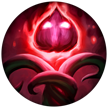







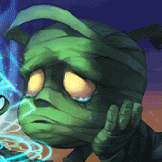
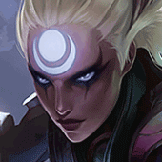
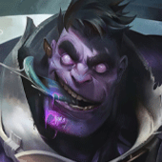
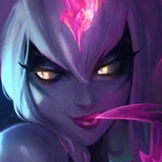
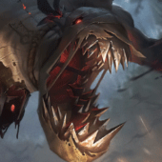
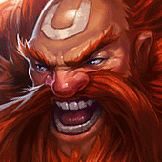
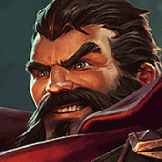
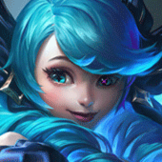
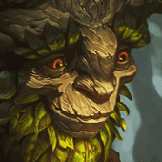
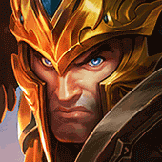
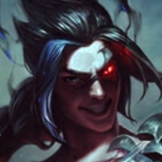
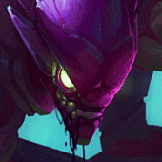
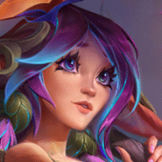
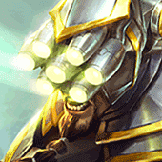
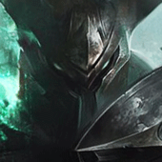
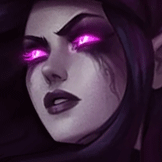
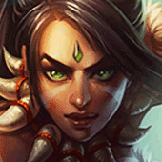
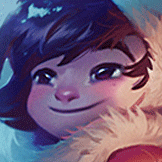
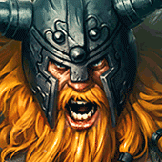
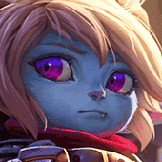

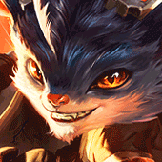
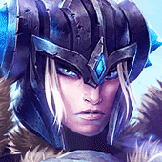
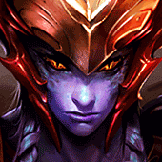
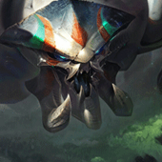
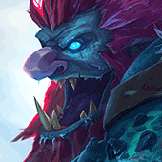
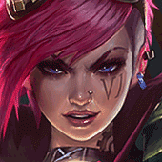

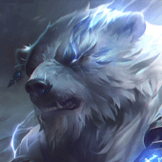
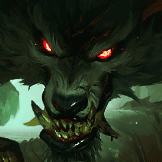
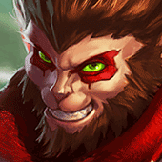
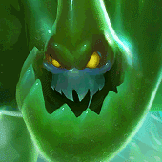
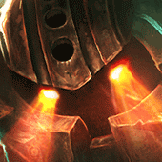











You must be logged in to comment. Please login or register.